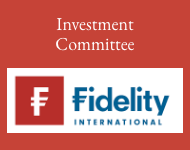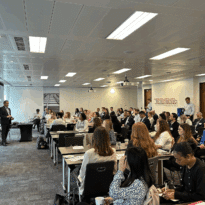Ian Rees, head of Multi Manager Funds, Premier Miton Investors, presents his assessment of the markets.
Over the last year, it has paid to remain ‘risk-on’ regarding equity allocations as markets continue to rise. Even as we write, the US market is hitting all-time highs every other day, while Japan breached its 1989 high in July after a 35 year wait.
While markets appear to look expensive relative to their history, we do not think companies themselves are extraordinarily overpriced, except for the excitement surrounding some US technology leaders and AI related beneficiaries, which offer little room for disappointment in their valuations.
That aside, we do remain positive on equity returns as we enter the last quarter of the year, particularly medium and smaller companies in most regions. To us, good earnings growth provides for less downside risk, although their starting valuations are key. Supporting this positive stance for earnings and returns is the resilient macroeconomic backdrop, low unemployment, ongoing consumer spending, a ‘cost of living crisis’ in retreat and the commencement of an easier monetary policy environment through lower interest rates.
With interest rates coming down at last, the media focus still largely rests on the next central bank meeting and the odds of a rate cut at each. However, it is worth remembering the broader trend and to also think ahead to where we expect rates to land. We think a range of around 3%-5% for UK and US markets looks realistic, a little lower than where they are now but some way above the trough emergency rates of 0%-1% seen following the global financial crisis of 2009. We think too little attention is given to this range being a reversion to a level that would be considered ‘normal’ during the 1990s and most of the noughties.
If this return to normality transpires, this will have consequences within financial markets. The low interest rate environment of the last 15 years has allowed some companies to stay afloat with cheap credit and ongoing refinancings – in bond parlance this is known as ‘extend and pretend’. With rates settling at higher levels than have been seen since 2009, this will put pressure on companies that have higher refinancing costs. Corporate debt is therefore something to monitor carefully as there will be much greater risk to investing in highly levered companies.
While markets have digested elevated levels of indebtedness by Western governments since 2009, the higher cost of future public borrowings does impose a fiscal discipline on governments who fear reaping the consequences of a bond buyer’s strike. This became an issue for the UK budget in 2022, resulting in a dramatic loss of confidence for the Liz Truss premiership. Maintaining budgetary discipline is also a live issue for the US government who will need to address their debt ceiling before the end of the year.
Bond auctions will provide a useful gauge for investor appetite and indicate any upward pressure on yields having to rise to compensate for additional issuance. In addition, if inflation has not been fully licked, this will fuel ongoing bond volatility. For now, we think the current environment is conducive to higher bond prices, but there are threats to keep an eye on.
Geopolitical risk remains in the daily headlines. While this can provide short-term uncertainty, it very rarely leads to a lasting impact on markets, or a material change to earnings expectations. This has been seen with the events in Ukraine. While tensions in the Middle East are both discomforting and unpleasant, their impact is primarily felt through commodity prices, in particular oil. This will need to be monitored, as any event that causes a resurgence in the oil price will have inflationary consequences for the global economy.
Elsewhere the US election is one to be watched. While polls for the presidential race remain tight, there are considerations beyond this. The control of the Senate and Congress, the legislature of the elected government, alongside the fiscal outlook, will be as important as to whoever is elected as President.
As we saw in August and September, the market is easily spooked by a downside surprise. On both occasions, softer US employment data concerned investors that the figures were a canary to a more sharply slowing economy. The unexpected data caused a temporary hiccup in markets until more reassuring comments from commentators and central bankers restored calm.
What this does show is investors sitting on healthy gains appear to take cover quickly when things look less certain. Our belief is that such episodes of volatility could be a more regular feature in the period ahead suggesting it remains worthwhile to prepare for disappointment.
With this in mind, we look to build diversified portfolios to not just be dependent on US allocations to drive returns. We have exposure to the likes of Japan in providing lower correlation to other equity markets and benefit from Chinese stimulus. We have also been mindful to retaining exposure to shorter maturity bonds which have less sensitivity to the volatile path of rate expectations (duration risk). We continue to improve the credit quality of our corporate bond holdings, avoiding much of the high yield issuance that looks like an accident waiting to happen.
































